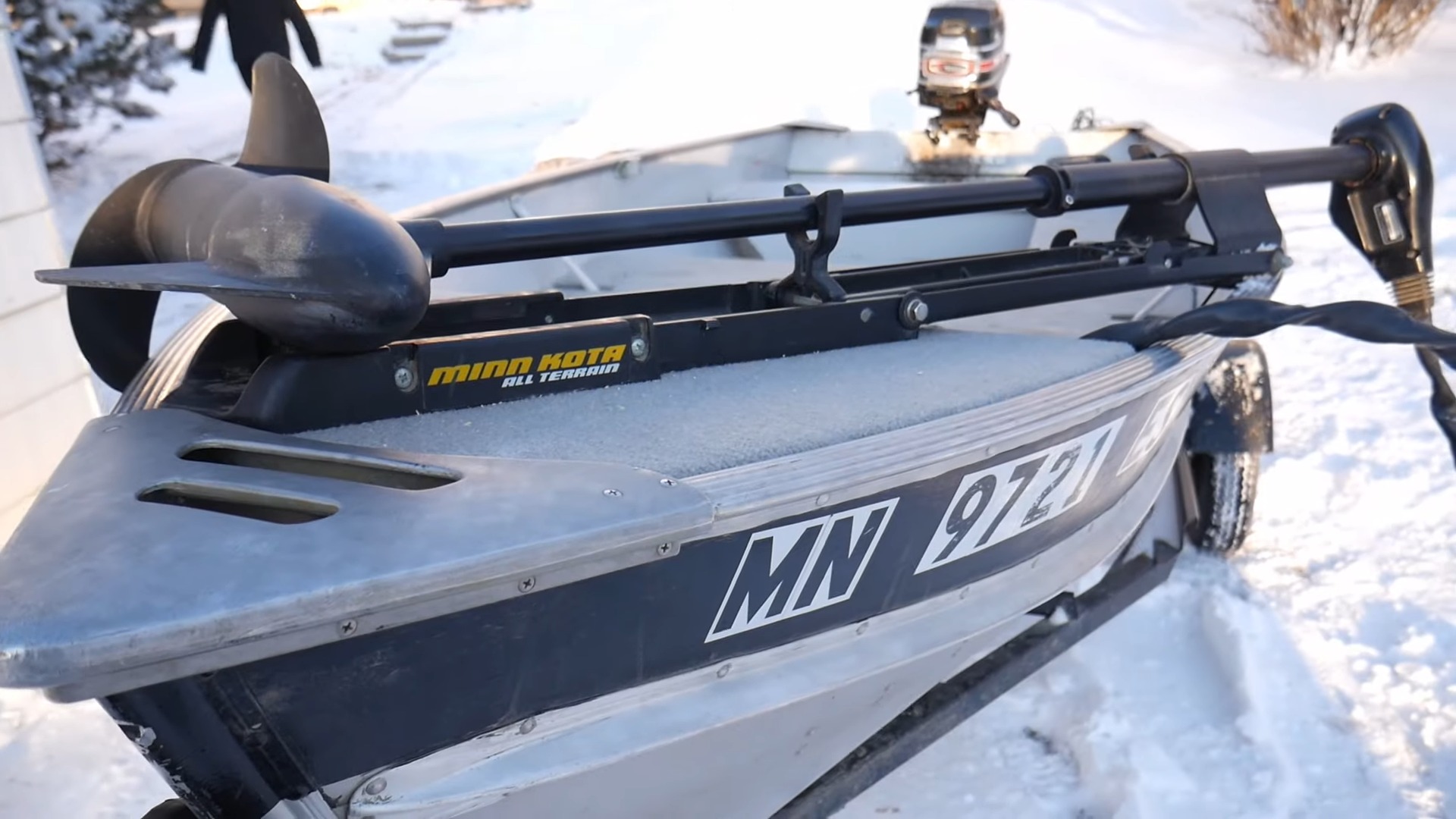Ever since I bought my new boat, and even when I had my old one, I was always on the lookout for ways to enhance it for a better fishing experience. Whether you’re a seasoned pro or just starting out in angling, I’ve been in both shoes and understand the thirst for improvement.
You might wonder, can we make modifications to a 12 ft aluminum v-hull boat? From personal experience, I can tell you it’s absolutely possible!
I’ve made several changes to mine, like installing a live bait tank and adding casting decks. I even installed an electric motor to give it that extra edge. Throughout this article, I’ll share the insights and details of these modifications, based on my own journey with my boat.
Let’s discuss these upgrades!
Why Are These Modifications Important?
Boat modifications, much like the tweaks a chef makes to a traditional recipe, bring out the unique character and utility of a vessel. The sheer joy of personalization is only surpassed by the enhanced performance, safety, and comfort the changes offer.
Personal Touch & Style
Just as every chef has their signature dish, every boat owner can have a vessel that reflects their personality. From paint jobs that represent your unique aesthetic to specially chosen seating, modifications allow you to infuse your boat with personal touches. Deck it out with decals, or even design a custom nameplate — your boat is a canvas waiting to be painted.
Enhanced Performance & Utility
The essence of a modification is to not just make the boat look better, but also to make it perform better. Whether you’re aiming for better speed, stability, or fuel efficiency, there are modifications that can help. Think of it as adjusting the seasoning in a dish; sometimes, a little tweak can change everything.
Useful 12 ft Aluminum v Hull Boat Modification
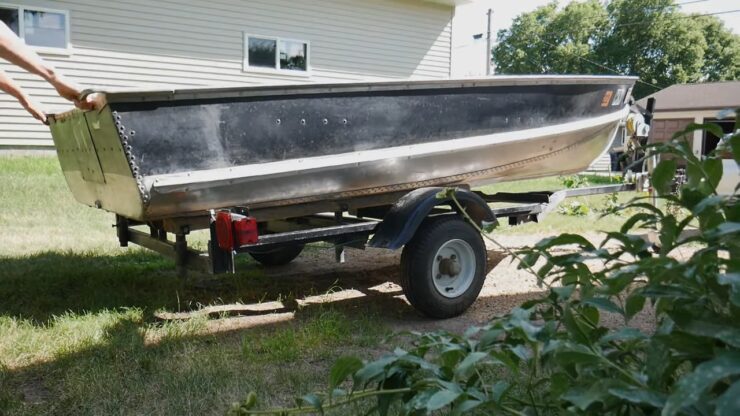
12 feet aluminum v Hull boats is robust and simple to transport. They can skip through the thinnest and deepest of waters. There are also plenty of modifications you can make to your little aluminum boat to get down to business. Let’s have a look at the modifications you can make for a better fishing experience.
Modification 1 of 3: Live Bait Tanks
A live bait tank is among the nicest fishing boat modifications. Especially if you’re a live bait angler. But let’s say you’re not familiar with live bait fishing. Then you should get to know everything about catching live bait.
Buckets are a horrible solution. Especially if you’re on the water all day and night. And changing the bait bucket is usually the very last priority while the fishing is hot. Your bait will swim around in the bait tank for as long as you want. So, you don’t need to worry about your bait going bad while fishing.
Live Bait Tank Installation Process
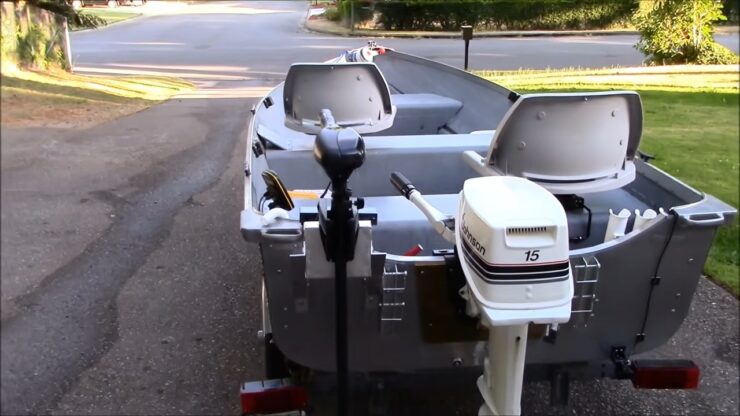
Setting up a live bait tank might seem overwhelming if you are unaware of what you’re doing. So, here’s the process to help you get the job done right.
Stage 1: Buy Live Bait Components
The very first thing you need to do is buy a suitable live bait tank for your boat. As well as other items required for the setup You’ll need accessories such as pipes, bilge pumps, draining pumps, water pick-ups, inlets and outlets, etc.
Stage 2: Hookup the Components
Now comes the difficult part. Once you’ve bought the setup you need to install it. Follow the step-by-step process to hook up the setup.
Step 1: Connect the Inlet and Outlets
First, you need to connect the inlet and the outlet pipes to the main tank. You need to use screws to connect the two ports. After securing the two ports you can move on to the next step.
Step 2: Connect the Pipe to the Inlet Port
Now, you need to connect a pipe to the inlet port. Water will pump into the tank through that pipe. The pipe connects the water pump and the tank.
Step 3: Connect the Water Pump
The next step is hooking up the water pump. You’ll need a bilge pump to pump up water into the tank. After setting up the pump you should test the bilge pump. You can set up the pump at the rear end of the boat. Make sure the water tank is not too far away from the pump. Or else you’ll require a longer pipe to connect the tank to the pump.
Step 4: Connect the Outlet to the Side of the Boat
Finally, you need to connect the outlet to the side of the boat. This will help you drain away the water and make room for fresh water to pump in. You need to make a hole or a similar outlet port at the side of the boat. Then connect the outlet of the tank to the boat. You can use a pipe to connect.
Modification 2 of 3: Casting Decks
Casting decks will help you go a long way in your fishing adventures. The difference between a good and a bad fishing day could be your casting deck. A casting deck creates an open area where you can cast freely. It will also lift you above the water level. You can install a casting deck at both ends.
Casting Deck Installation Process
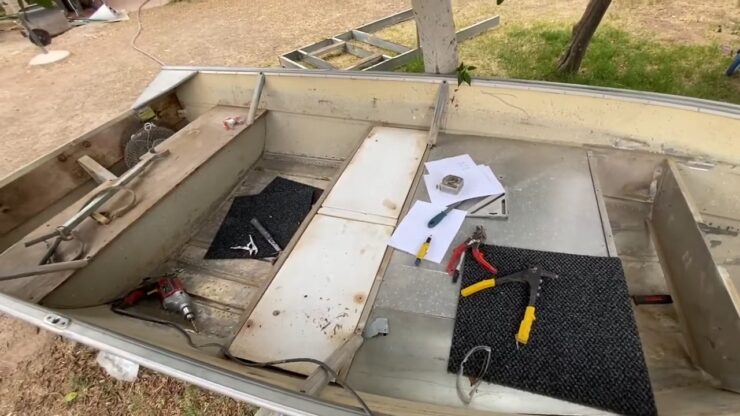
Setting up a casting deck is not that difficult but it could take up some labor. Let’s have a look at the step-by-step process.
Step 1: Measuring the Boat
The first thing you should do is measure your boat. It’s required to determine the size of the raised casting deck.These measurements need to be detailed. Because you need a rough idea of how much plywood you’ll need.
Step 2: Determining the Shape
To determine the shape you can take cardboard and outline the deck area. First, put cardboard over the deck area and outline the cardboard aligning the deck shape. Then, cut the cardboard according to the outline. You’ll be left with a shape that’ll fit the deck. Then place the cardboard cutout over a plywood board that is 12mm thick. Then cut the plywood.
Step 3: Building the Frame
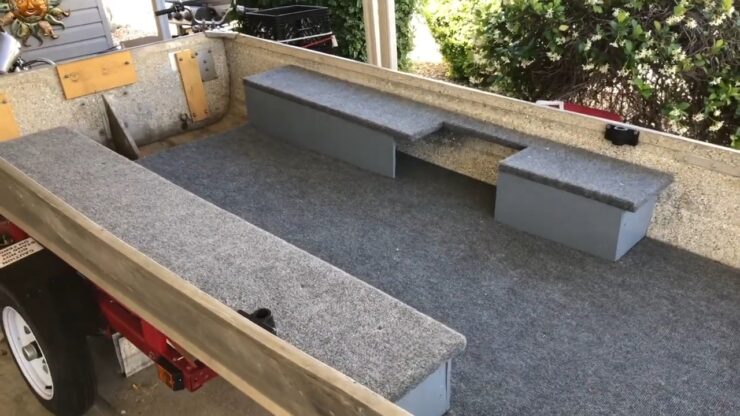
After that, you need to build a frame underneath the plywood deck surface. The frame will give stability to the plywood deck surface. You need to make a frame separately and then attach it underneath the plywood. That’ll keep the deck from sliding away.
Step 4: Treating the Wood
After the deck is ready you need to treat the wood. You can use a marine sealant to make the wood waterproof. And after that use a marine safe carpet to cover the wood. Then finally place the deck on the deck area. And your casting deck is ready. Then you can go ahead and mount the pedestal seat.
Now you know the installation process.
Modification 3 of 3: Electric Motors
Although outboard motors could be expensive, it’ll pay dividends. While you go fishing, the rumbling of a petrol motor will scare your catch. But an electrical motor is much quieter. The fish won’t know that you’re there until you catch them.
Installing an Electrical Motor
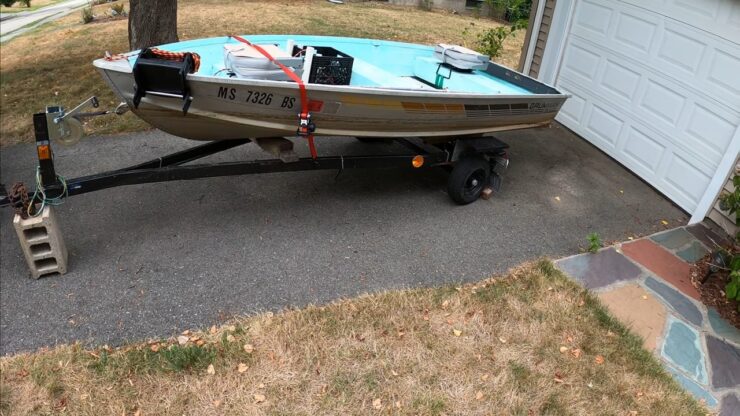
This might sound hard but it’s actually quite easy to install an electric motor on your boat. Let’s have a look.
Step 1: Mount the Motor
Let’s assume you have a motor. Now you need to mount it. First, you need to attach a bracket with the motor. Usually, the bracket will come with the motor. Then you need to attach the bracket to the rear end of the boat. You need to drill the screws into the boat’s surface through the bracket to fixate the motor.
Step 2: Connect the Wire
After mounting the motor you need to connect the motor’s electrical wire to a battery. A pair of 6v batteries should be enough to power the motor. After connecting the motor wire to the battery you’re good to go.
Electric motors come in different ratings, so it’s important to know what type of battery and charger your boat uses to ensure compatibility. Most boats use 12 volts, but some use 24 or 36 volts. You also need to decide how often you want the boat to turn – most boats require around 10 minutes of recharge per day, but this varies depending on the type of battery and charger used.
FAQs
Is it safe to modify a 12 ft aluminum V hull boat?
Yes, it is safe to modify a 12 ft aluminum V hull boat as long as you follow recommended procedures and guidelines. Ensure that the modifications don’t compromise the structural integrity of the boat and always adhere to weight distribution guidelines for safety.
Do these modifications significantly increase the weight of the boat?
While some modifications can add weight, they typically do not make a significant difference unless you’re adding a lot of equipment. It’s essential to always keep the boat’s weight capacity in mind and avoid overloading.
How often do I need to maintain or clean the live bait tank?
A live bait tank should be cleaned after each use to ensure a healthy environment for the bait. Over time, residues can build up, and regular cleaning prevents harmful bacteria growth and keeps the system functioning optimally.
Can I install multiple types of motors on my boat, like an electric and a petrol motor?
Yes, many anglers have both an electric trolling motor for quiet, slow-speed fishing and a petrol outboard for faster transportation. You just need to ensure proper mounting for both motors and maintain weight balance.
How do I ensure that the casting deck remains non-slippery, especially in wet conditions?
You can apply a non-slip marine deck paint or use marine-grade carpeting. Both options provide grip even when wet, ensuring safety while fishing.
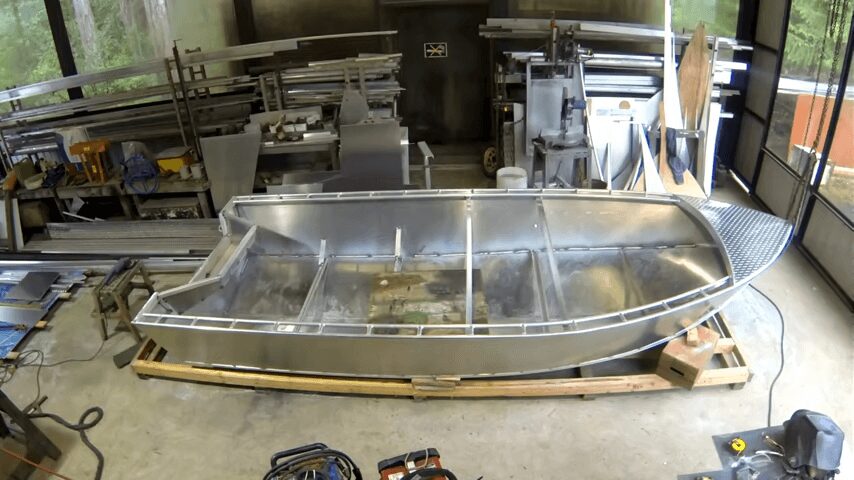
Are there any legal restrictions or licenses needed for these modifications?
Some jurisdictions might have regulations about boat modifications, especially when it comes to motor installations. Always check local laws and regulations before making any significant changes to your boat. Some modifications might also affect the boat’s insurance, so it’s a good idea to check with your insurance provider as well.
Final Words
Modifying a 12 ft aluminum V-hull boat can truly transform your angling experience, merging both functionality and personalized style. By integrating features like live bait tanks, casting decks, and electric motors, you’re not only enhancing your boat’s performance but also paving the way for more successful fishing trips.
Remember, it’s not just about the aesthetics; it’s about creating a vessel tailored to your fishing needs. Whether you’re an angling novice or a seasoned pro, these modifications offer a chance to redefine and rejuvenate your time on the water.
I’m Liam Jackson, the proud owner and driving force behind KayakPaddling.net. Born somewhere in the expansive beauty of the United States, I’ve nurtured a lifelong passion for kayaking and fishing that has led me to explore the far corners of our nation’s waterways.
Related Posts:
- 16 Best Kayak For Beginners 2024 - Kayaking Adventure Gear
- Heavy Duty Fishing: 11 Best Rods And Reels For Big Fish 2024
- 12 Best Beach Wagons & Carts 2024 - For All-Terrain
- 10 Best Saltwater Fishing Boats - Ultimate Angling Adventure
- 10 Best Fish Finders Under $200 2024 - Top Affordable Picks
- 12 Best Motorized Kayak 2024 - Start Your Aquatic Adventure!

